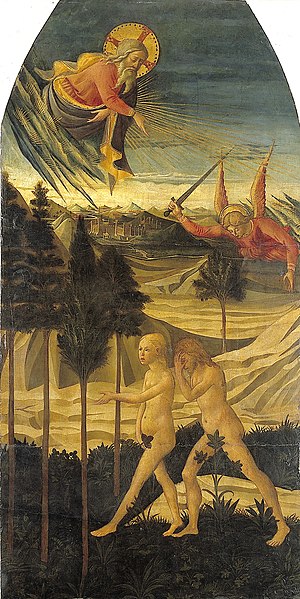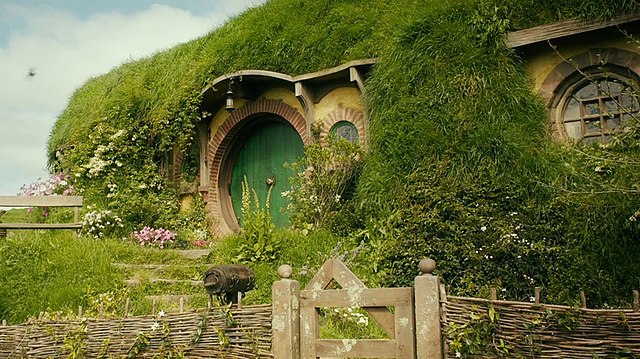In J. R. R. Tolkien's fictional legendarium, Beleriand was a region in northwestern Middle-earth during the First Age. Events in Beleriand are described chiefly in his work The Silmarillion, which tells the story of the early ages of Middle-earth in a style similar to the epic hero tales of Nordic literature, with a pervasive sense of doom over the character's actions. Beleriand also appears in the works The Book of Lost Tales, The Children of Húrin, and in the epic poems of The Lays of Beleriand.
Tolkien borrowed the Arthurian place-name Brocéliande, an enchanted forest, for an early version of Beleriand. Detail of 1868 illustration by Gustave Doré
Men flee into Beleriand from the East: perhaps, Shippey writes, they were expelled from Eden. Painting by D. di Michelino, c. 1460
Middle-earth is the setting of much of the English writer J. R. R. Tolkien's fantasy. The term is equivalent to the Miðgarðr of Norse mythology and Middangeard in Old English works, including Beowulf. Middle-earth is the human-inhabited world, that is, the central continent of the Earth, in Tolkien's imagined mythological past. Tolkien's most widely read works, The Hobbit and The Lord of the Rings, are set entirely in Middle-earth. "Middle-earth" has also become a short-hand term for Tolkien's legendarium, his large body of fantasy writings, and for the entirety of his fictional world.
A detail of Middle-earth in one of Peter Jackson's film sets
Medieval Christian cosmology: heaven above, earth in the middle, hell below. Vank Cathedral, Isfahan.




